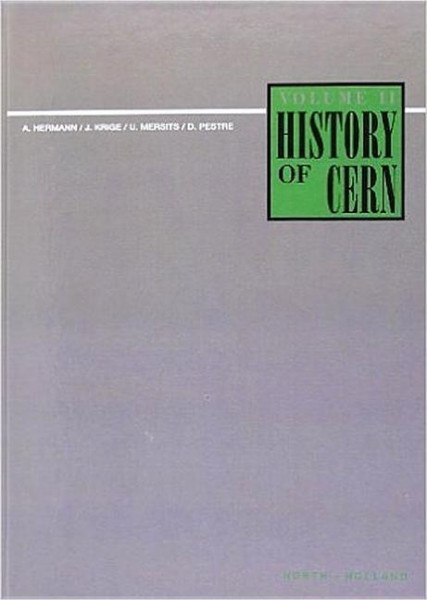
History of Cern, II
Kurzinformation
inkl. MwSt. Versandinformationen
Lieferzeit 1-3 Werktage
Lieferzeit 1-3 Werktage

Beschreibung
The first volume of the History of CERN (published in 1987) dealt with the launching of the European Organization for Nuclear Research covering the period 1949 to 1954. Volume II continues the history through to the mid-1960's, when it was decided to equip the laboratory with a second generation of accelerators and a new Director-General was nominated. It covers the building and the running of the laboratory during these dozen years, it studies the construction and exploitation of the 600 MeV Synchro-cyclotron and the 28 GeV Proton Synchrotron, it considers the setting up of the material and organizational infrastructure which made this possible, and it covers the reigns of four Director-Generals, Felix Bloch, Cornelis Bakker, John Adams and Victor Weisskopf. Three considerations are relevant to the treatment of the material in this volume. Firstly the political dimension, in the broad sense of the term, was no longer omnipresent as during the process of creation. Alongside it scientific and technical determinations were at work. The second consideration is that the institutional dimension was also inescapably present. Finally, there was no longer one dominant process in the organisation's life but several and it was no longer possible to tell just one story. The authors therefore decided to focus attention on various aspects of CERN's life. Part I attempts to describe the various aspects which together constitute the history of CERN and aims to offer a synchronic panorama year by year account of CERN's many activities. Part II deals primarily with technological achievements and scientific results and it includes the most technical chapters in the volume, chapters using as main sources publications in the open literature, internal reports, and minutes of specialized committees or of divisional meetings. Part III aims to define how the CERN ``system'' functioned, how this science-based organization worked, how it chose, planned and concretely realized its experimental programme on the shop-floor and how it identified the equipment it would need in the long term and organized its relations with the outside world, notably the political world. The concluding Part IV aims to bring out the specificity of CERN, to identify the ways in which it differed from other big science laboratories in the 1950's and 1960's, and to try to understand where its uniqueness and originality lay. von Hermann, A.;Weiss, L.;Pestre, D.;Mersits, U.;Krige, J.;
Produktdetails

So garantieren wir Dir zu jeder Zeit Premiumqualität.
Über den Autor

- Hardcover
- 632 Seiten
- Erschienen 1987
- North Holland

- Hardcover
- 380 Seiten
- Erschienen 2000
- World Scientific Publishing...

- hardcover
- 322 Seiten
- Erschienen 2011
- De Gruyter

- Gebunden
- 416 Seiten
- Erschienen 1991
- Springer

- hardcover
- 476 Seiten
- Erschienen 2011
- Wiley-VCH

- Hardcover
- 430 Seiten
- Erschienen 2016
- Princeton University Press

- Hardcover
- 552 Seiten
- Erschienen 1996
- WORLD SCIENTIFIC PUB CO INC

- Hardcover
- 392 Seiten
- Erschienen 2008
- World Scientific Publishing...

- Hardcover
- 178 Seiten
- Wissenschaftliche Buchgesel...

- Kartoniert
- 218 Seiten
- Erschienen 2023
- Vdf Hochschulverlag

- Hardcover
- 544 Seiten
- Erschienen 2002
- Springer

- Taschenbuch
- 472 Seiten
- Erschienen 2003
- Cambridge University Press

- Taschenbuch
- 728 Seiten
- Erschienen 2004
- IMPERIAL COLLEGE PRESS




 bestellen
bestellen
























